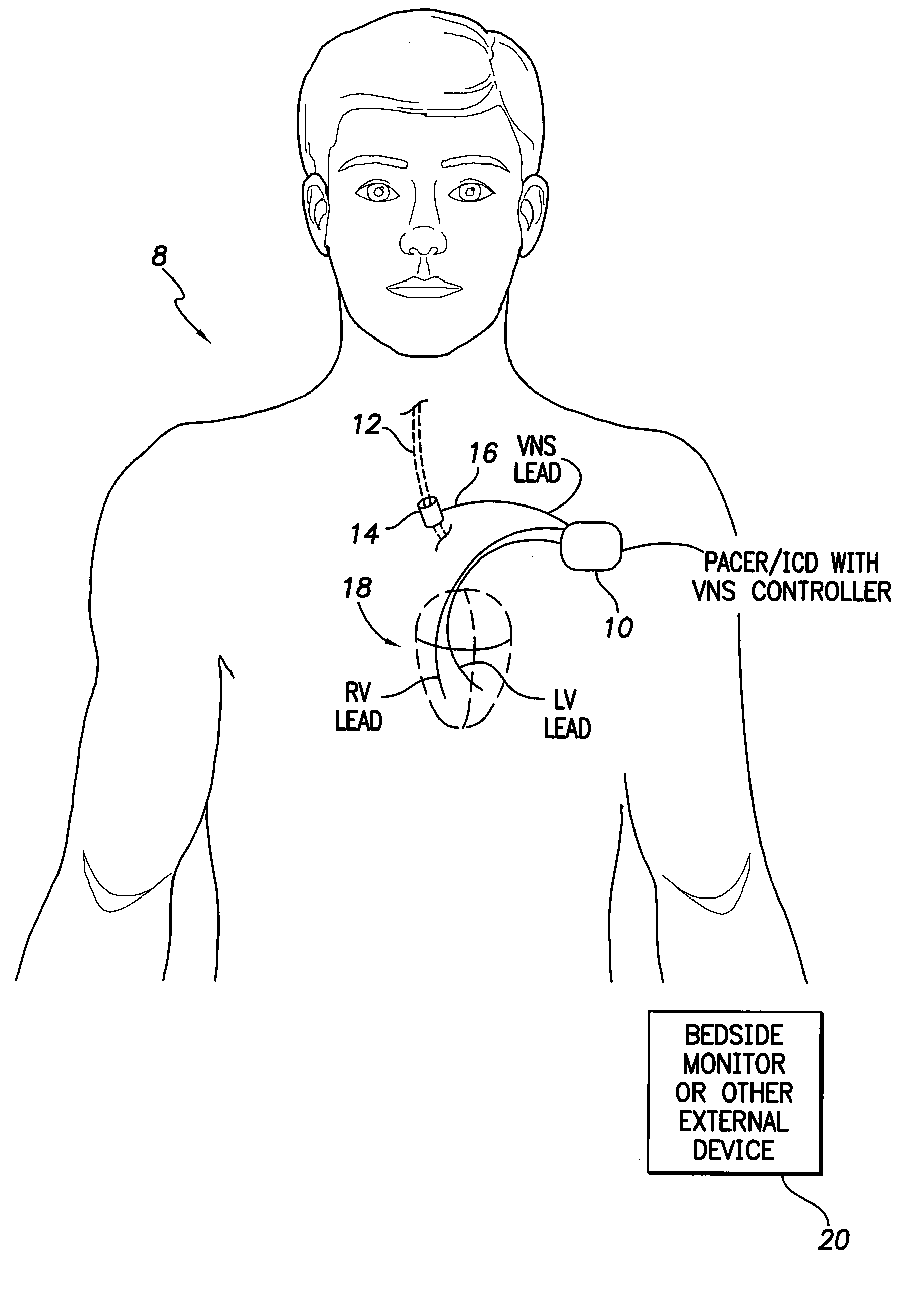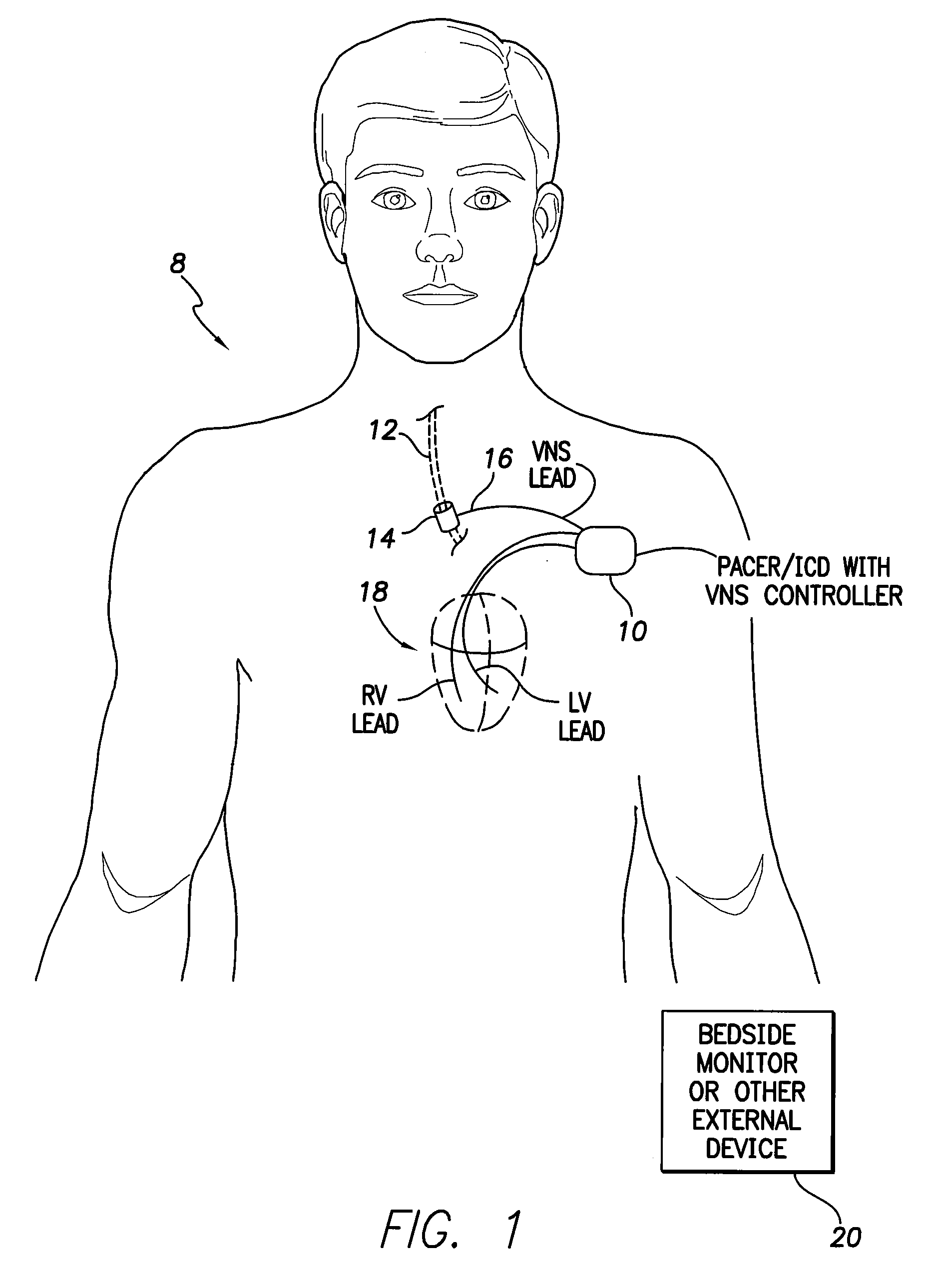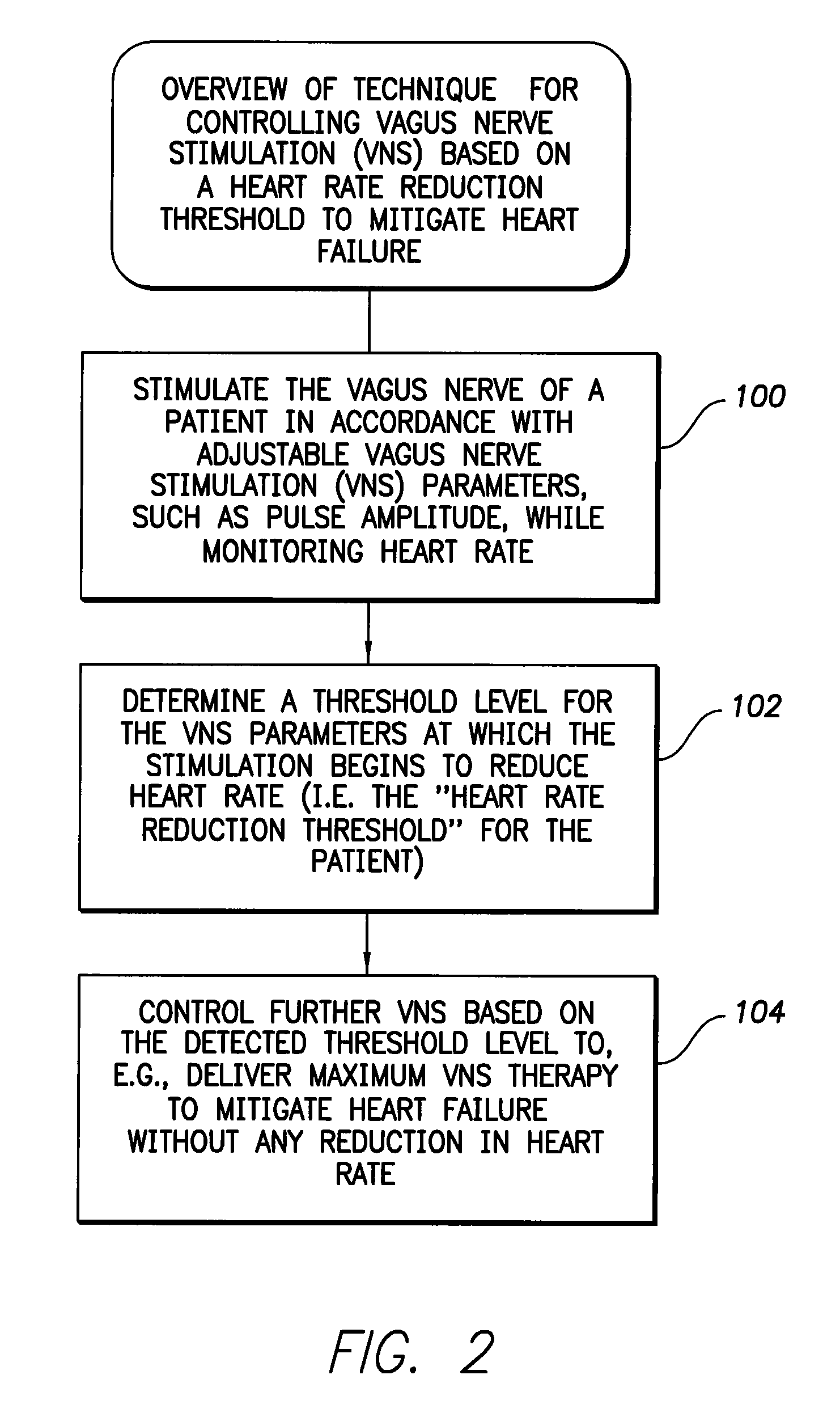Systems and Methds for Use by an Implantable Medical Device for Controlling Vagus Nerve Stimulation Based on Heart Rate Reduction Curves and Thresholds to Mitigate Heart Failure
a technology of vagus nerve and system, which is applied in the direction of heart stimulators, electrotherapy, therapy, etc., can solve the problems of impaired arterial circulation, depriving vital organs of oxygen and nutrients, and losing propulsive power of the heart, so as to reduce heart rate and mitigate heart failure. , the effect of reducing the heart ra
- Summary
- Abstract
- Description
- Claims
- Application Information
AI Technical Summary
Benefits of technology
Problems solved by technology
Method used
Image
Examples
Embodiment Construction
[0028]The following description includes the best mode presently contemplated for practicing the invention. This description is not to be taken in a limiting sense but is made merely to describe general principles of the invention. The scope of the invention should be ascertained with reference to the issued claims. In the description of the invention that follows, like numerals or reference designators are used to refer to like parts or elements throughout.
Overview of Implantable Medical System
[0029]FIG. 1 illustrates an implantable medical system 8 capable of delivering vagus nerve stimulation (VNS) to the patient in which the system is implanted so as to, e.g., mitigate heart failure. To this end, a pacer / ICD 10 (or other suitable implantable medical device) delivers VNS via to one or more of the cardiac branches of the vagus nerve 12 of the patient (also generally referred to as the 10th cranial nerve.) VNS is delivered to a suitable branch of the vagus nerve by a vagus nerve st...
PUM
 Login to View More
Login to View More Abstract
Description
Claims
Application Information
 Login to View More
Login to View More - R&D
- Intellectual Property
- Life Sciences
- Materials
- Tech Scout
- Unparalleled Data Quality
- Higher Quality Content
- 60% Fewer Hallucinations
Browse by: Latest US Patents, China's latest patents, Technical Efficacy Thesaurus, Application Domain, Technology Topic, Popular Technical Reports.
© 2025 PatSnap. All rights reserved.Legal|Privacy policy|Modern Slavery Act Transparency Statement|Sitemap|About US| Contact US: help@patsnap.com



